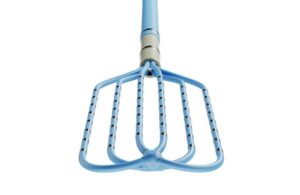
Irvine, California-based Biosense Webster designed Optrell as a high-density diagnostic catheter powered by its Carto 3 system. It features small electrodes arranged in a fixed array formation. These provide high-definition electrophysiological mapping of complex cardiac arrhythmia cases.
Optrell with TrueRef maps cases like persistent AFib, redo AFib ablation, atrial tachycardia and ventricular tachycardia.
Biosense Webster received FDA 510(k) clearance for Optrell with TrueRef in 2022. In addition to this U.S. launch, it plans to make the technology available in Japan later this year.
How the Biosense Webster mapping catheter works
The new catheter from Biosense Webster includes 48 electrodes symmetrically distributed across and along six splines. It combines with Carto 3 to deliver intelligent insights and high-resolution directional mapping. Carto 3 offers local conduction vectors displaying real-time direction and speed of electrical impulses traveling through the heart.
Optrell’s tight electrode spacing and small electrodes help to produce a higher signal resolution, too. This enables enhanced maps of the heart.
Biosense Webster said in a news release that the high-definition maps give clinicians a better understanding of where the arrhythmia occurs. This enables them to develop a more effective ablation strategy. The Cleveland Clinic’s Dr. Pasquale Santangeli said the catheter and vectors give him “the confidence to quickly and effectively detect ablation lesion gaps and the arrhythmia substrate, even in the most complex cases.”
“The Optrell mapping catheter rounds out the Biosense Webster diagnostic mapping portfolio, providing physicians with a comprehensive set of tools, integrated with our Carto 3 mapping system, to diagnose and treat arrhythmias,” said Jasmina Brooks, president, Biosense Webster. “This is the latest example of the continued commitment of Biosense Webster to providing clinicians with innovative tools to improve efficiency and effectiveness of procedures and quality of care for patients.”

